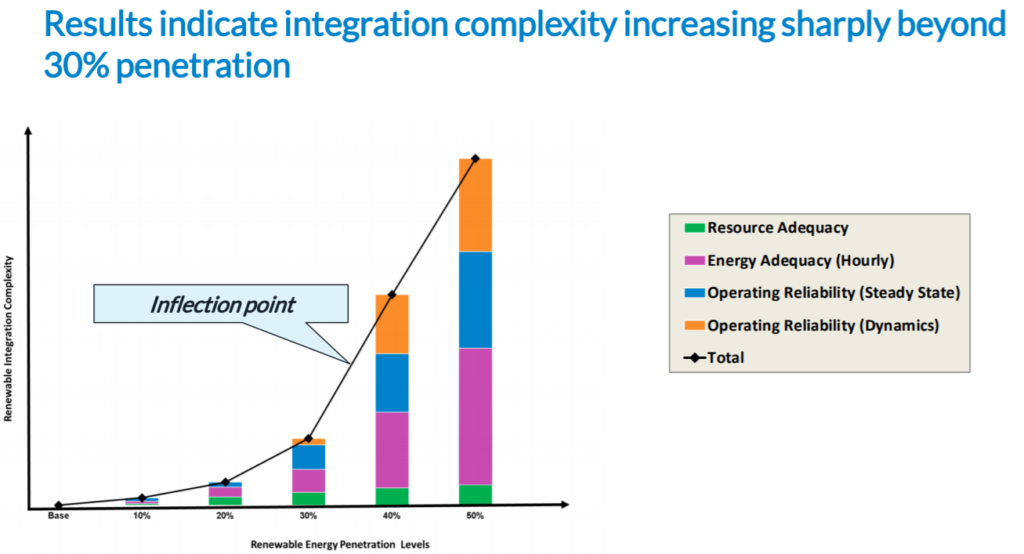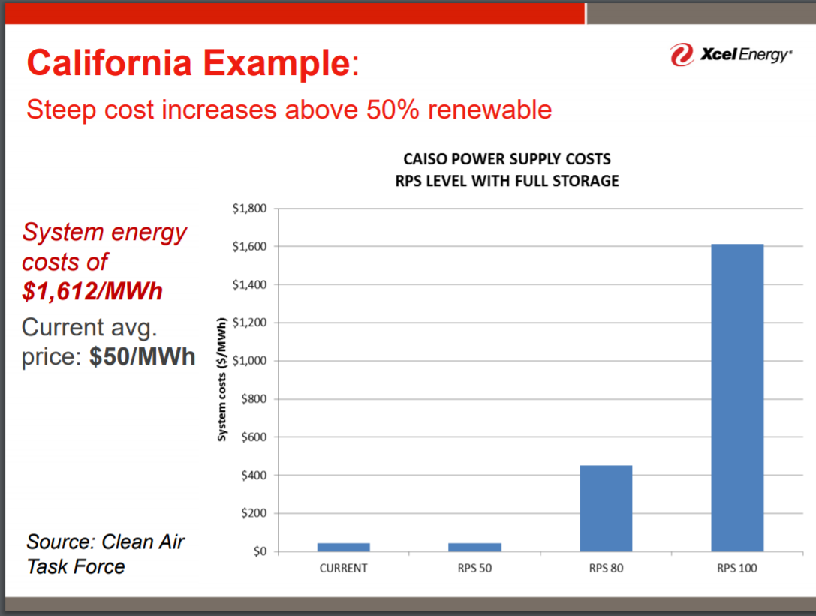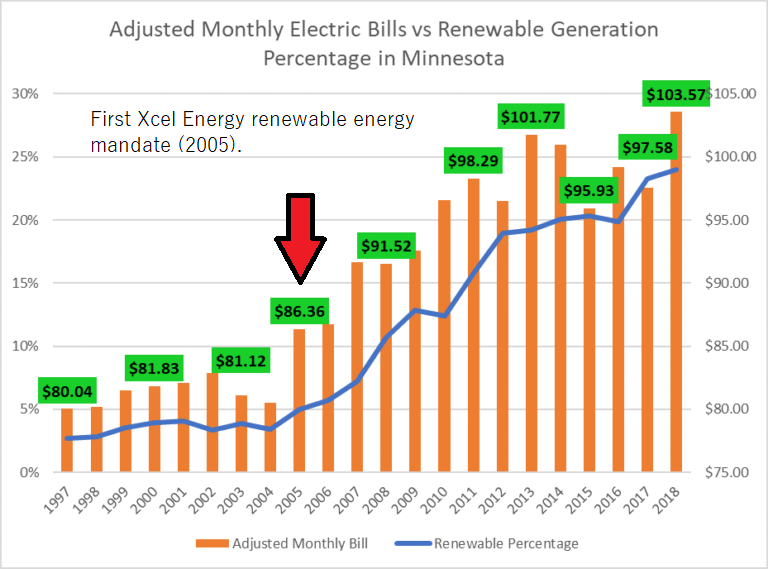Grid Operator Study Shows Complexity of Integrating Renewables Increases Exponentially After 30 Percent
The grid operator for the region including Minnesota, the Midcontinent Independent Systems Operator (MISO), recently released it’s study examining the complexity of integrating renewable energy onto the grid. The findings show that it becomes exponentially more difficult to integrate renewable energy into the regional grid as the amount of renewable energy increases beyond 30 percent, as you can see in the graph below.

This is important, because it clearly shows that the challenges of integrating intermittent renewable energy sources like wind are not, in fact, overblown, as the Star Tribune editorial board argued earlier this year. In reality, these challenges have not even truly begun to emerge.
The steep inflection point after 30 percent renewables is a function of many factors. One of them is the enormous amount of transmission needed to integrate intermittent renewables on to the grid without overloading the system. Grid congestion is already dramatically slowing wind and solar construction in MISO because high transmission upgrade costs have forced developers to pull projects out of the MISO interconnection queue:
“Of 5,000 megawatts of wind and solar projects in MISO’s western region that were part of a group being studied for interconnection, all but 250 MW had withdrawn as of Dec. 1. And it’s unlikely those projects will move forward because they would require $100 million in transmission upgrades, the group said.”
Relieving this congestion will be incredibly expensive. A conglomerate of utility companies and electric co-ops are currently working on an estimate for the cost of building the transmission lines necessary to accommodate more renewables known as CapX2050. Preliminary estimates for this grid expansion are a jaw-dropping $12 billion.
If there is a steep inflection point after thirty percent integration, moving to a grid powered by 100 percent wind, solar, and batteries makes them seem quaint. I’ve shown this slide from Xcel Energy recently, which shows the estimated costs of using only renewables and batteries in California increases exponentially after 50 percent. In fact, the average Minnesota household, which used 786 kilowatt hours of electricity per month in 2018, would see their average electric bill increase from about $103 per month, to at least $1,257 every single month.

Despite the enormous complexity and unbearable cost, Governor Walz and progressive members of the Minnesota House of Representatives seem more determined than ever to push forward with their incredibly expensive 100 percent carbon-free energy mandate that does not include large hydro, or lift Minnesota’s ban on new nuclear power plants. Amazingly, they seem to think that wind, solar, and batteries will actually decrease costs for consumers, even though real-world data from the U.S. Energy Information Administration show Minnesota electric bills continue to reach new record highs as more renewable energy sources are integrated into the grid.

Minnesota families are already paying about $21 more every month than they would if we didn’t have renewable energy mandates in our state. This means the wind and solar tax costs the average Minnesota household an extra $250 every year. Unfortunately, the study from MISO shows that the wind and solar tax will grow exponentially in the future if we become more dependent upon these sources of energy.
If Governor Walz and progressive politicians want to make their case to the people of Minnesota that averting an immeasurably small amount of future global warming is worth the enormous price tag, that is their prerogative, but it is intellectually dishonest for them to assert that these policies will save consumers money at the same time.